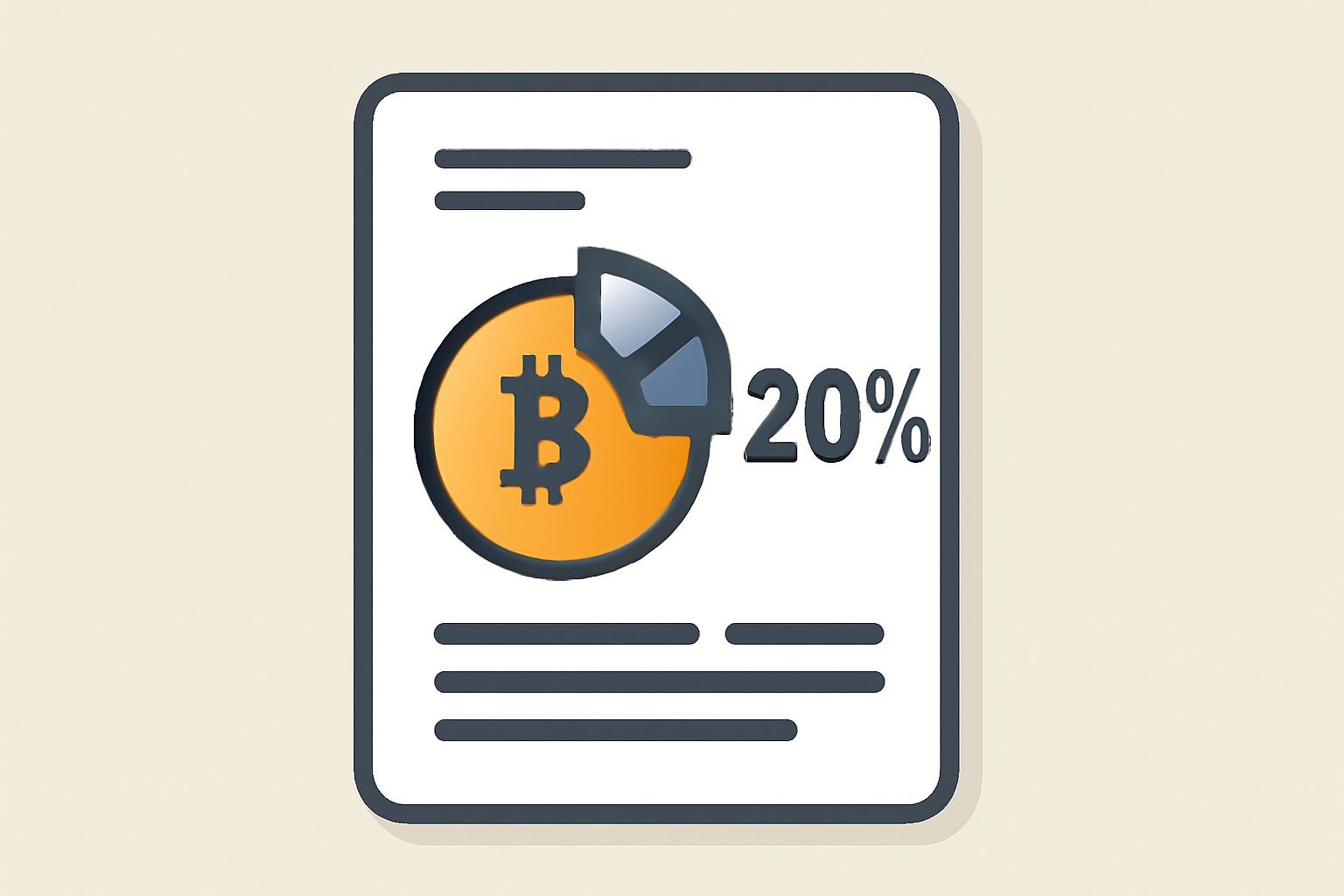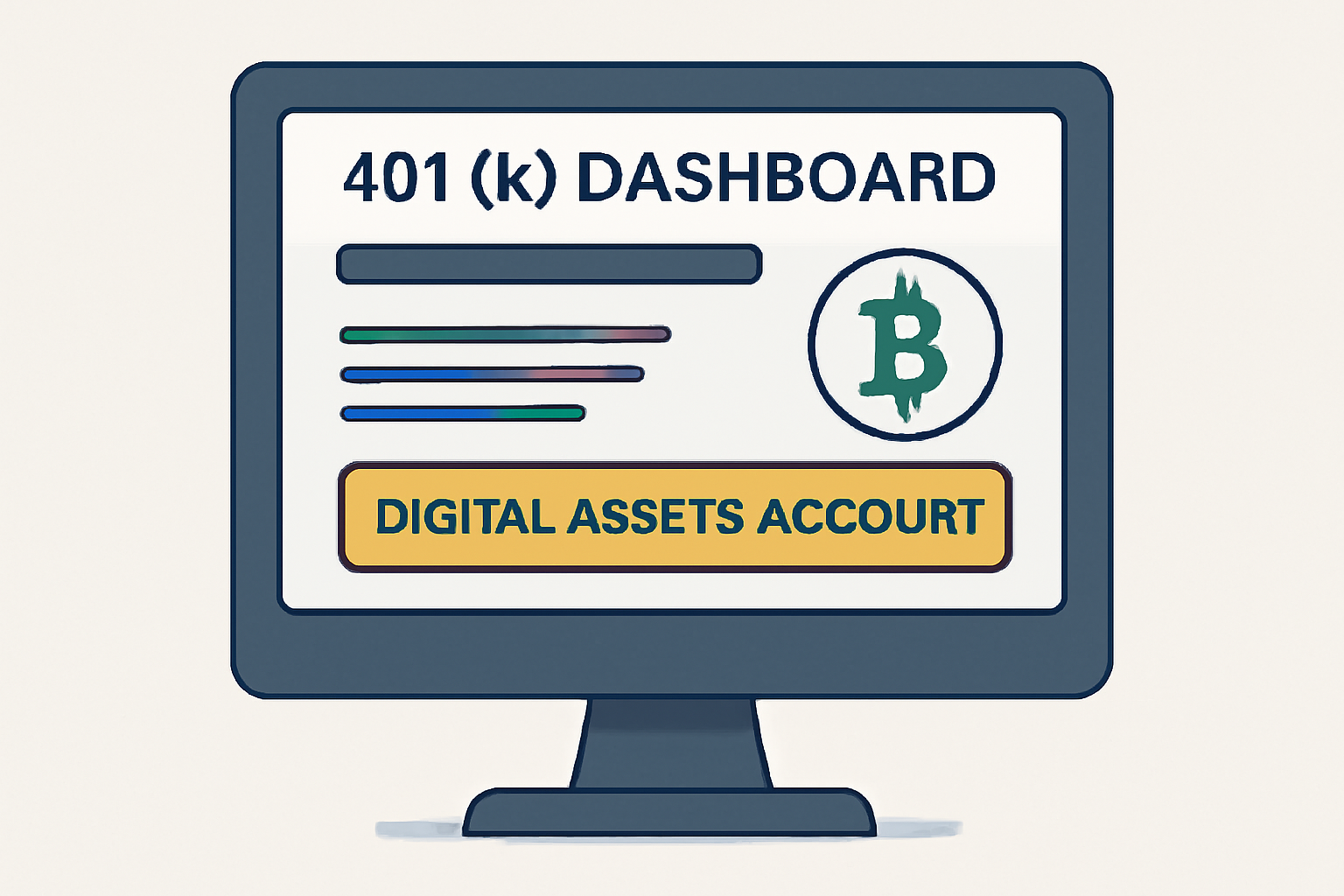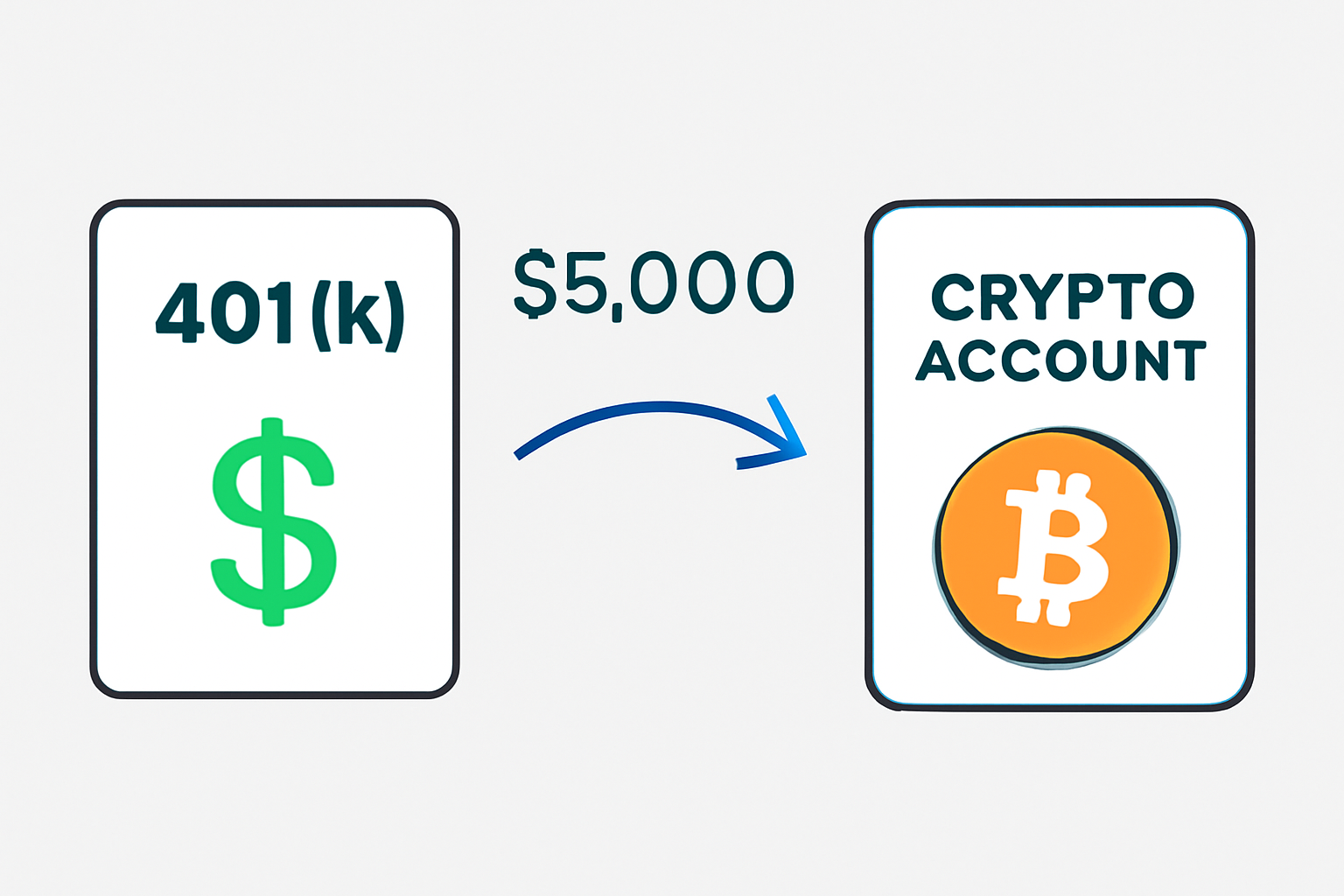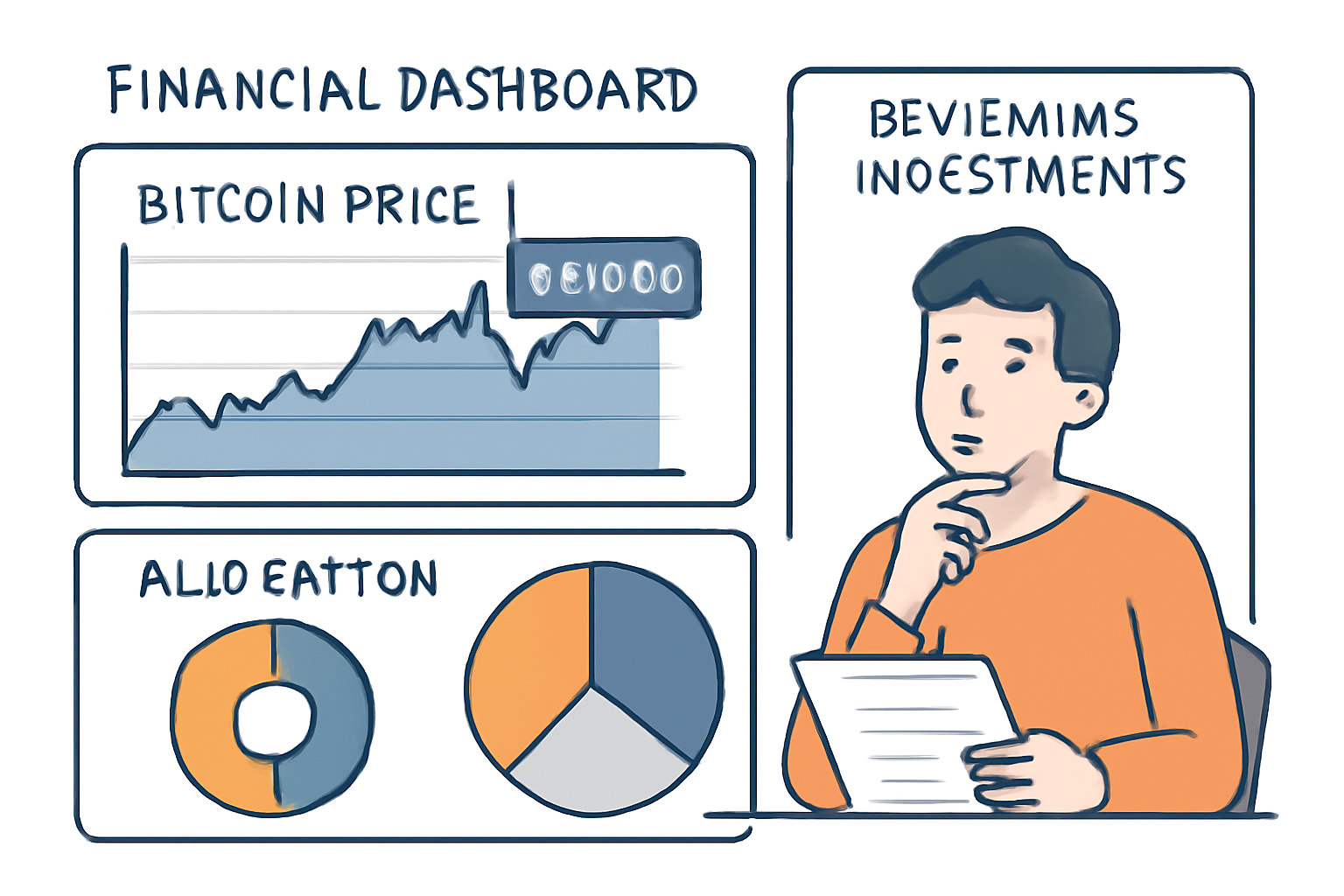
If you’ve been waiting for the right moment to diversify your retirement savings with digital assets, 2025 is your year. With Bitcoin (BTC) trading at $115,721.00 as of September 20,2025, and new regulatory clarity opening the door for crypto in retirement plans, adding Bitcoin to your 401(k) is no longer a fringe idea, it’s a mainstream opportunity. Let’s break down exactly how to seize this moment and bring Bitcoin into your retirement future.
Why Bitcoin in Your 401(k) Is Gaining Momentum
The landscape has shifted dramatically in just the past year. In August 2025, President Trump signed an executive order instructing the SEC to make alternative assets, including cryptocurrencies, available in defined-contribution plans like 401(k)s. The Department of Labor has also rescinded its previous cautionary guidance, making it easier for plan sponsors to consider offering digital assets (Kiplinger). Major providers like Fidelity now allow up to 20% of a participant’s 401(k) allocation in Bitcoin, but remember, individual employers set their own limits and must approve crypto options within their plan.
“Adding crypto to my retirement portfolio felt risky at first. But with today’s regulatory changes and institutional adoption, it’s become a smart way to diversify. “
Preparing Your Portfolio: What You Need to Know First
Before you start moving funds into BTC, get familiar with these critical points:
- Your Plan Must Offer Crypto: Not all employers or plan administrators have enabled cryptocurrency investment windows yet. Check with your HR department or plan sponsor.
- Contribution Limits: Even if your provider allows up to 20% allocation (like Fidelity), your employer may set lower caps, often starting at around 5%.
- Volatility and Risk: Bitcoin remains volatile. In the last day alone, BTC moved between $117,117.00 and $115,162.00, a reminder that sharp swings are part of the deal.
- Custody and Security: Institutional-grade custody solutions are standard for retirement accounts but always review how your provider secures digital assets.
This is not about chasing quick wins, it’s about building long-term resilience into your nest egg by embracing innovation responsibly.
The Practical Path: How to Add Bitcoin to Your 401(k)
The process is more straightforward than ever before thanks to new platforms and regulatory support. Here’s what you can expect when integrating BTC into your plan:
If you’re working with a provider that supports direct crypto purchases, such as Fidelity or ForUsAll, you’ll typically see an option called a “Crypto Window” or “Digital Asset Account. ” This lets you allocate a portion of your existing balance (or ongoing contributions) into approved digital currencies like BTC.
You may also have the option of rolling over funds from an existing account into a self-directed IRA that supports crypto investments (Forbes). This approach offers even more flexibility but comes with additional paperwork and fees, so weigh those tradeoffs carefully.
Once you’ve identified which route fits your needs, take a moment to review your current portfolio allocation and risk tolerance. Remember, the goal is to achieve balance, Bitcoin’s potential for outsized growth is exciting, but it should complement rather than dominate your retirement mix.
Smart Strategies for Bitcoin 401(k) Integration
With Bitcoin firmly above the $100,000 milestone and currently priced at $115,721.00, it’s tempting to go all-in. But seasoned investors know that moderation and strategy are key. Here are some proven tactics for optimizing your crypto retirement account:
Top Strategies for Managing Bitcoin in Your 401(k)
-

Set a Prudent Allocation Limit: Major providers like Fidelity Investments now allow up to 20% of your 401(k) to be allocated to Bitcoin, but many experts recommend starting with a modest percentage—often 5% or less—to balance potential gains with volatility. Always confirm your plan’s specific limits before investing.
-

Diversify Beyond Bitcoin: While Bitcoin (BTC) is the most established cryptocurrency, consider balancing your portfolio with traditional assets like stocks, bonds, and index funds to reduce risk and smooth out market swings.
-

Utilize Dollar-Cost Averaging (DCA): Regularly invest a fixed amount into Bitcoin through your 401(k) to mitigate the impact of price volatility—especially with Bitcoin trading at $115,721 as of September 20, 2025.
-
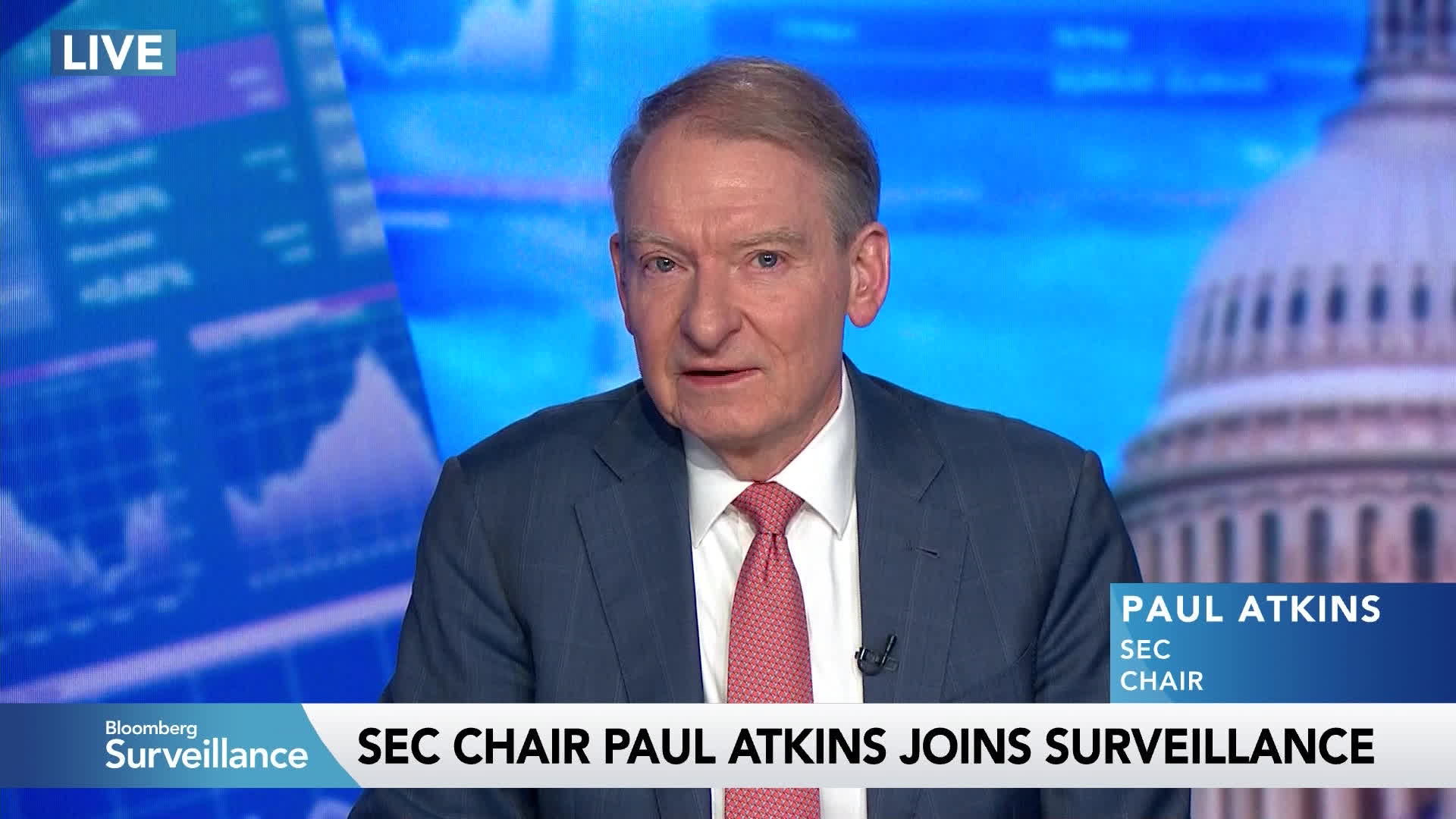
Monitor Regulatory Updates: Stay informed on evolving rules from the U.S. Department of Labor and SEC, as recent changes—including the 2025 executive order—may affect your ability to invest in Bitcoin and other digital assets within retirement accounts.
-

Review Employer and Plan Sponsor Policies: Not all 401(k) plans offer Bitcoin exposure. Check with your employer and plan administrator to understand whether crypto options are available and what restrictions may apply.
-

Leverage Professional Guidance: Consult a certified financial planner or retirement specialist with experience in digital assets to tailor your Bitcoin allocation to your risk tolerance and long-term goals.
Diversification remains non-negotiable. Even if your plan allows a 20% allocation, most experts suggest starting with 1-5% of your total portfolio in Bitcoin or other digital assets. This provides meaningful exposure without overconcentration risk. As you gain confidence and as regulations continue evolving, you can revisit and adjust your allocation.
Dollar-cost averaging (DCA) is another powerful approach, set up recurring contributions into the crypto window rather than making a single lump-sum purchase. This smooths out volatility and takes the emotion out of timing the market.
Stay engaged with ongoing education. The crypto landscape moves fast: new coins, forks, custody solutions, and regulatory tweaks can all impact your holdings. Make it a habit to review updates from your plan provider and track market movements using reliable sources.
Potential Risks, and How to Navigate Them
No investment is risk-free, and Bitcoin’s volatility is legendary. Over the past 24 hours alone, BTC’s price has shifted between $117,117.00 and $115,162.00. While these swings can be unnerving in the short term, remember that retirement investing is about long-term horizons, daily fluctuations matter less than decade-long trends.
Regulatory uncertainty remains a factor despite recent progress. While the Department of Labor and SEC have adopted more open stances (Kiplinger), future policy shifts could impact access or tax treatment for crypto in retirement plans.
Security risks, though mitigated by institutional custody partners like Fidelity or Coinbase Trust Company, still exist, always confirm that your provider uses robust cold storage solutions and insurance policies.
The best way to manage these risks? Stay informed, diversify across asset classes, not just within crypto, and periodically rebalance as your goals evolve.

Looking Ahead: The Future of Crypto Retirement Accounts
The door to digital assets in 401(k)s is now wide open thanks to regulatory momentum and institutional adoption, but this is just the beginning. As more employers embrace these options and as providers expand their digital asset menus beyond Bitcoin (think Ethereum or tokenized funds), expect even greater flexibility for building resilient portfolios that capture tomorrow’s growth engines.
Bitcoin (BTC) Price Prediction for Retirement Investors (2026-2031)
Professional outlook for Bitcoin price targets as 401(k) adoption expands (2025 baseline: $115,721)
| Year | Minimum Price (Bearish) | Average Price (Base Case) | Maximum Price (Bullish) | Year-over-Year Change (%) | Key Market Scenario |
|---|---|---|---|---|---|
| 2026 | $95,000 | $128,000 | $165,000 | +10.6% (avg) | Adoption grows, but volatility around new 401(k) inclusion |
| 2027 | $110,000 | $145,000 | $195,000 | +13.3% (avg) | 401(k) allocations stabilize, institutions increase exposure |
| 2028 | $125,000 | $168,000 | $235,000 | +15.9% (avg) | Macro tailwinds, possible ETF approvals, increased retirement flows |
| 2029 | $140,000 | $195,000 | $280,000 | +16.1% (avg) | Global pension funds begin limited allocations, tech upgrades (e.g., scaling) |
| 2030 | $125,000 | $225,000 | $340,000 | +15.4% (avg) | Market cycle peak, mainstream retirement adoption, higher volatility |
| 2031 | $110,000 | $255,000 | $410,000 | +13.3% (avg) | Potential regulatory tightening, maturing market, long-term holders dominate |
Price Prediction Summary
Bitcoin is projected to experience steady growth through 2031 as regulatory clarity and retirement account adoption drive new inflows. Price volatility will remain, with minimum prices reflecting potential bear markets and maximum prices capturing bullish institutional and retirement-driven scenarios. The base case anticipates average annual gains of 13–16% as Bitcoin solidifies its role in diversified retirement portfolios. Investors should expect both sharp corrections and periods of strong momentum as the market matures.
Key Factors Affecting Bitcoin Price
- Regulatory environment: SEC and DOL attitudes toward crypto in retirement plans
- Institutional and 401(k) adoption rates
- Macroeconomic conditions (inflation, interest rates)
- Technological upgrades to Bitcoin (scalability, security)
- Market competition and alternative digital assets
- Global pension and retirement fund participation
- Potential for ETF approvals and new investment vehicles
Disclaimer: Cryptocurrency price predictions are speculative and based on current market analysis.
Actual prices may vary significantly due to market volatility, regulatory changes, and other factors.
Always do your own research before making investment decisions.
If you’re ready to lead rather than follow, if you want your retirement savings working in tandem with innovation, it’s time to act. Consult with your HR team or plan administrator about available options. Start small if needed; let experience guide you as you adapt.


